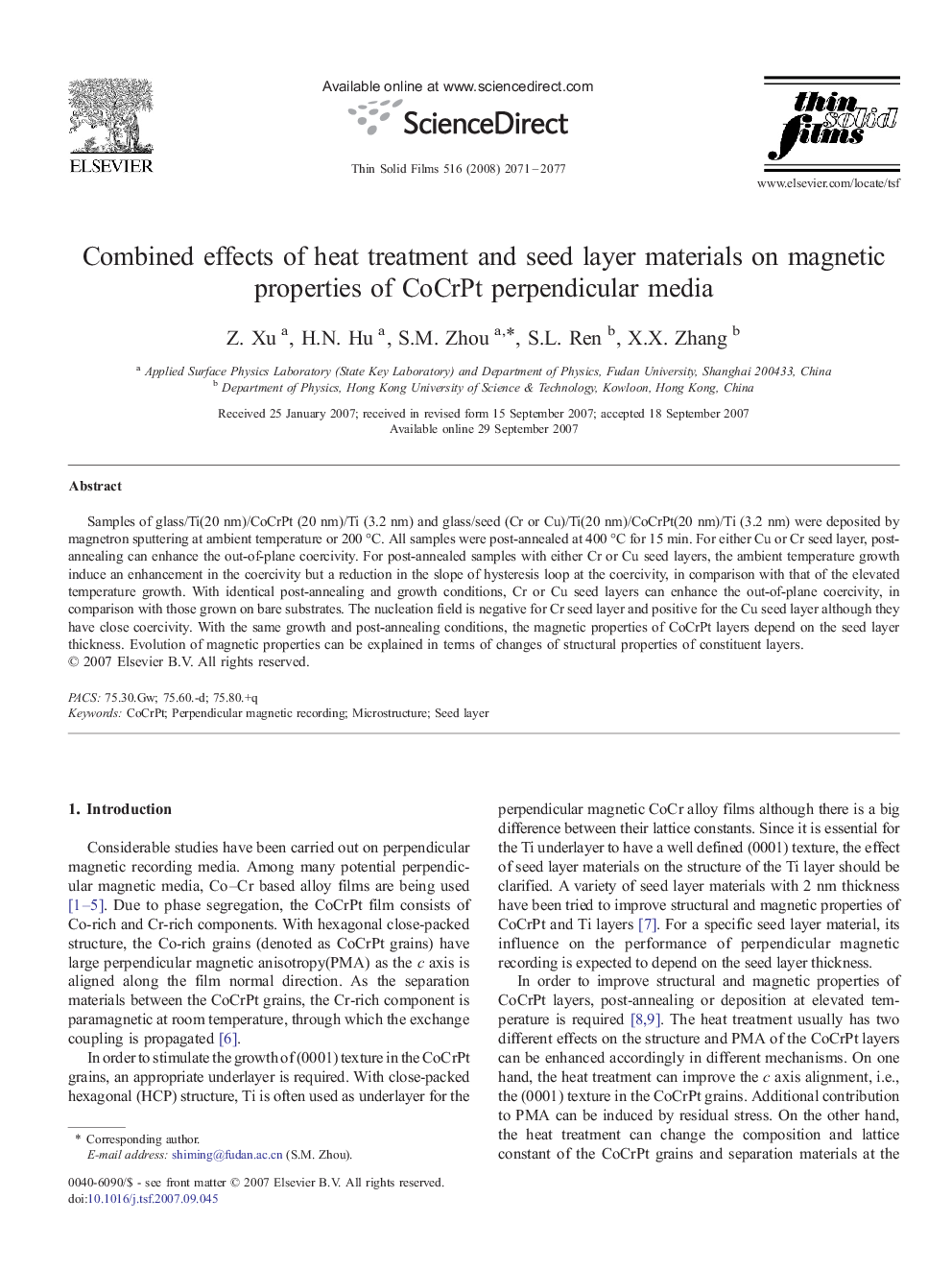| Article ID | Journal | Published Year | Pages | File Type |
|---|---|---|---|---|
| 1674313 | Thin Solid Films | 2008 | 7 Pages |
Abstract
Samples of glass/Ti(20 nm)/CoCrPt (20 nm)/Ti (3.2 nm) and glass/seed (Cr or Cu)/Ti(20 nm)/CoCrPt(20 nm)/Ti (3.2 nm) were deposited by magnetron sputtering at ambient temperature or 200 °C. All samples were post-annealed at 400 °C for 15 min. For either Cu or Cr seed layer, post-annealing can enhance the out-of-plane coercivity. For post-annealed samples with either Cr or Cu seed layers, the ambient temperature growth induce an enhancement in the coercivity but a reduction in the slope of hysteresis loop at the coercivity, in comparison with that of the elevated temperature growth. With identical post-annealing and growth conditions, Cr or Cu seed layers can enhance the out-of-plane coercivity, in comparison with those grown on bare substrates. The nucleation field is negative for Cr seed layer and positive for the Cu seed layer although they have close coercivity. With the same growth and post-annealing conditions, the magnetic properties of CoCrPt layers depend on the seed layer thickness. Evolution of magnetic properties can be explained in terms of changes of structural properties of constituent layers.
Related Topics
Physical Sciences and Engineering
Materials Science
Nanotechnology
Authors
Z. Xu, H.N. Hu, S.M. Zhou, S.L. Ren, X.X. Zhang,
